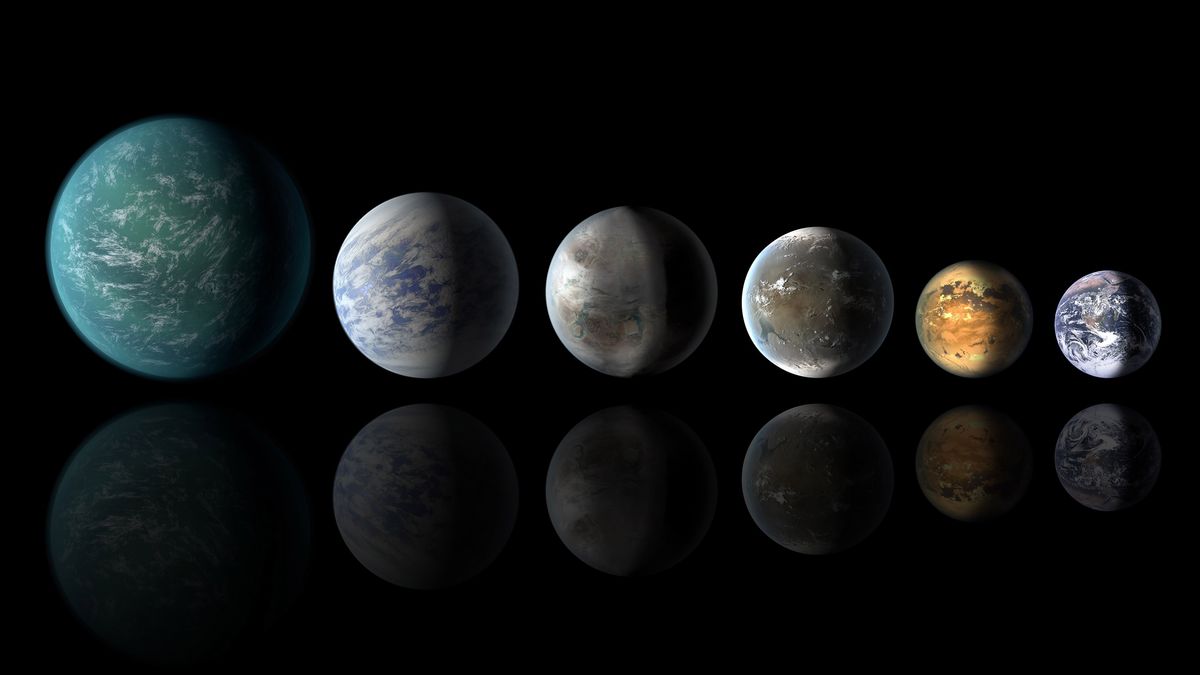
(Image credit: NASA/Ames/JPL-Caltech)
This approach could ultimately provide answers to some heavily debated topics, such as the existence of a “hot Neptune desert,” which refers to the strange scarcity of Neptune-size planets in close orbits around their stars, and the “radius valley,” a distinct gap between planets with roughly 1.5 and 2 times the Earth‘s radius.
Observing young exoplanets offers a unique opportunity to study planets in their primordial state, before they undergo the extensive atmospheric and evolutionary changes seen in older populations — and thanks to the advent of wide-field, high-precision transit surveys like those constructed with NASA’s Kepler and TESS missions, it’s possible to gather such observations.
These missions allow astronomers to study exoplanets that are millions, and even billions, of light-years away with remarkable detail by measuring small drops in starlight that happen as planets pass in front of their stars, from our perspective in the cosmos. By monitoring these dips, astronomers can infer the presence of a planet, its size and the length of its orbit.
“Our ability to detect and observe young planets is often limited by how ‘quiet’ the planet’s host star is,” Galen Bergsten, a Ph.D. candidate at the University of Arizona, told Space.com. “We need to detect subtle signals that can get lost in the noise. Young planets orbit young stars, and young stars tend to be very noisy, which makes extracting the signals of their young planets all the more difficult.”
“Our analysis focuses on planets with short orbits [12 days],” Rachel Fernandes, a post-doctoral researcher at Penn State University, told Space.com. “We found that planets change over time in two big ways: they shrink as they lose their atmospheres, and they move inward due to interactions with their star.”
“But 12 days is a tiny slice of space,” she emphasized. “To really understand how planets evolve, we need to study both close-in and farther-out planets at different stages in their lives. That could help us figure out how quickly planets migrate inward and how fast they lose their atmospheres — two big questions we still don’t have clear answers to.”
The team divided the observational subjects into two age groups: young planets (10 million – 100 million years old) and intermediate-age planets (100 million years to 1 billion years old). They then compared the occurrence rates of these planets using data from NASA’s TESS, or Transiting Exoplanet Survey Satellite, for the younger population and from Kepler for the older population. In short, the scientists found a higher occurrence of young planets.
“The fact that we see a higher occurrence for young planets compared to old ones tells us that planets might be shrinking,” said Bergsten. “In the early stages of planet formation and evolution, we think that small planets were really common. But they cool down and lose their atmospheres over time, which makes them shrink to smaller sizes that we aren’t sensitive to with most studies.”
This is because these planets closely orbit their stars, the resulting radiation from which strips away their atmospheres. “This causes them to shrink with time,” said Fernandes, “and explains why we see fewer large sub-Neptunes around older stars — many of them have simply lost too much of their atmosphere to stay the same size.”
These findings help shed light on how long it takes for planets to cool down and lose their atmospheres by tracking how their numbers change over time. “We found the biggest decrease in occurrence on longer [hundreds of millions of years] timescales, which might help to distinguish between different theories of how planets cool and lose their atmospheres,” said Bergsten.
The team also speculates that a phenomenon called tidal migration might be playing a role in shaping the occurrence rate of short-period planets. This is the process by which planets gradually move closer to their star due to the gravitational pull from the star. This causes the planet to lose energy and spiral inward over time, often resulting in planets entering much shorter orbits.
“Understanding tidal migration is important because it helps explain how and why some planets end up with such short orbits and what happens to them as they move inward,” stated Fernandes.
Future missions will provide more detailed data, allowing for better observations of planets farther from their stars and smaller planets with greater precision. Studying stars with high precision over longer periods could improve our ability to detect and characterize young planets orbiting those stars.
“Everything we know about planets comes from the fewer than 6,000 we’ve discovered so far,” said Fernandes. “But in the next few decades, missions from NASA and ESA — like Roman, PLATO and Gaia — will find tens to hundreds of thousands more. This will help us piece together the full picture of planet formation and evolution and place our own solar system into context.
“With so much new data on the horizon, the next few decades will be incredibly exciting for exoplanet research,” she concluded.
The team’s study was published on March 17 in The Astronomical Journal.
Join our Space Forums to keep talking space on the latest missions, night sky and more! And if you have a news tip, correction or comment, let us know at: community@space.com.
Discover more from Cave News Times
Subscribe to get the latest posts sent to your email.



































Discussion about this post